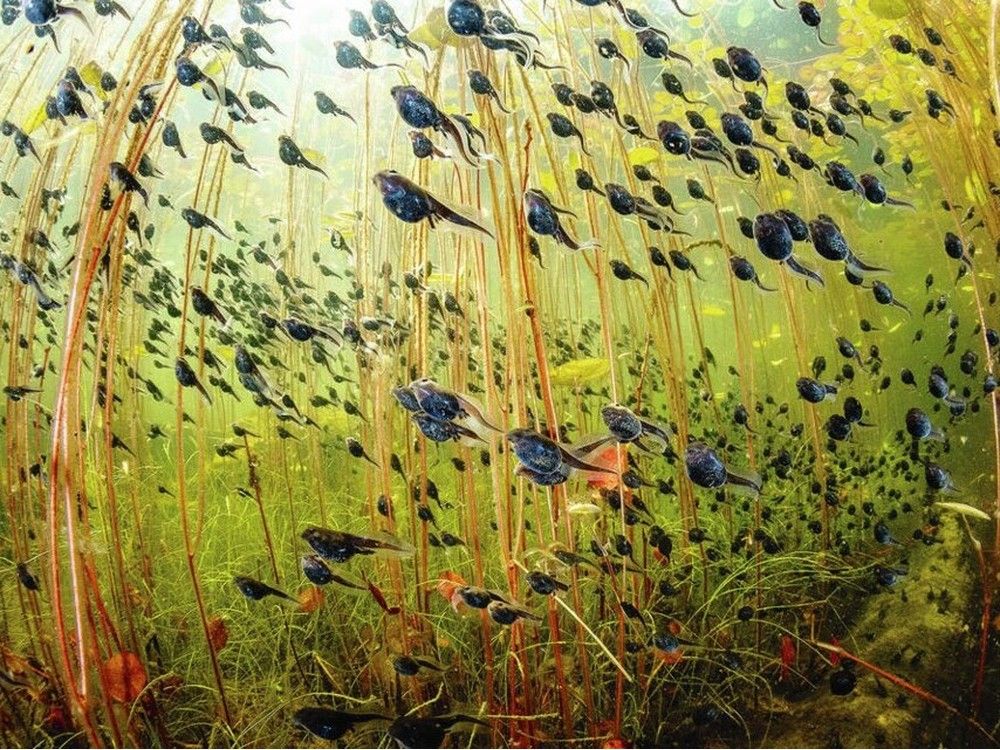The thylacine, or 'Tasmanian tiger,' is poised for a Jurassic Park-style resurrection
Published Oct 20, 2024 • Last updated 6 minutes ago • 3 minute read

When will humans achieve the first recovery of an extinct animal species? Sorry to start off with a trick question: technically, when a cloned baby Pyrenean ibex was born in 2003, it became the first mammalian species to undergo “de-extinction.” When the infant died from lung defects a few minutes later, the Pyrenean ibex also became the first animal species of any kind known to have suffered extinction a second time. That’s Homo sapiens for ya.
Advertisement 2
THIS CONTENT IS RESERVED FOR SUBSCRIBERS
Enjoy the latest local, national and international news.
- Exclusive articles by Conrad Black, Barbara Kay and others. Plus, special edition NP Platformed and First Reading newsletters and virtual events.
- Unlimited online access to National Post and 15 news sites with one account.
- National Post ePaper, an electronic replica of the print edition to view on any device, share and comment on.
- Daily puzzles including the New York Times Crossword.
- Support local journalism.
SUBSCRIBE FOR MORE ARTICLES
Enjoy the latest local, national and international news.
- Exclusive articles by Conrad Black, Barbara Kay and others. Plus, special edition NP Platformed and First Reading newsletters and virtual events.
- Unlimited online access to National Post and 15 news sites with one account.
- National Post ePaper, an electronic replica of the print edition to view on any device, share and comment on.
- Daily puzzles including the New York Times Crossword.
- Support local journalism.
REGISTER / SIGN IN TO UNLOCK MORE ARTICLES
Create an account or sign in to continue with your reading experience.
- Access articles from across Canada with one account.
- Share your thoughts and join the conversation in the comments.
- Enjoy additional articles per month.
- Get email updates from your favourite authors.
THIS ARTICLE IS FREE TO READ REGISTER TO UNLOCK.
Create an account or sign in to continue with your reading experience.
- Access articles from across Canada with one account
- Share your thoughts and join the conversation in the comments
- Enjoy additional articles per month
- Get email updates from your favourite authors
Article content
So far in history, that’s the high-water mark for animal species de-extinctions. The ibex was a special case: this animal’s extinction was foreseen, and living cell samples from the last wild female were preserved with an eye to future revival. Conservation biologists weren’t sure that direct cloning and embryonic implantation would work, and back in 2003 it didn’t, but there has been a revolution in gene-editing technique since then. The first animals to become fully de-extinct are likely to be ones like the Pyrenean ibex — a creature that went extinct recently (in 2000), that has close genetic relatives suitable for surrogacy and that has an existing native ecosystem.
No human, even in the Basque Country, is likely to get too excited over an increase of one in the number of kinds of wild goat bounding around in the hills. But there are now biologists hoping to recover some of the celebrities in the record of lost species — the woolly mammoth, the dodo, perhaps even the legendary North American passenger pigeon. On Thursday, researchers for the de-extinction company Colossal announced a remarkable discovery: they claim to have recovered a near-complete genome for the thylacine, the doglike “Tasmanian tiger” whose last living exemplar died in captivity in 1936.
By signing up you consent to receive the above newsletter from Postmedia Network Inc.
Article content
Advertisement 3
Article content
Recommended from Editorial
-

Colby Cosh: The time of novels is ending; the age of post-literacy is nearly here
-

Colby Cosh: How socialist Cuba charted its own demographic doom
The Guardian has published an amusing account of the serendipitous discovery of a mutilated but otherwise well-preserved thylacine head that had been “dumped” into a bucket of alcohol and forgotten for decades in an old museum cupboard. Scientists say they were able to recover long sequences of DNA from the skull, and even significant amounts of RNA, which normally breaks down faster than DNA and which provides clues to gene expression that DNA doesn’t. The Colossal team hasn’t published its results in peer-reviewed form, and doesn’t appear to be in any hurry. The company’s CEO says, essentially, that they’re too busy trying to create living thylacines to engage with editors, reviewers and biologists who have superstitious fears of playing God.
The thylacine, a carnivorous marsupial, is a good candidate for genuine de-extinction, since its wild habitat still exists. The trick is, of course, actually creating one. The approach the company envisions is to make incremental edits to the DNA of a genetically related but very dissimilar organism, Tasmania’s mouse-like fat-tailed dunnart. This process is already underway, but there is a lot of uncertainty: no one’s sure exactly how complete Colossal’s thylacine genome might be, and no one’s sure what the gene-modification pathway from dunnart to “tiger” might look like. Initially, the company expects to create “a pretty weird, modified version” of the thylacine with recreated traits.
Advertisement 4
Article content
This does sound enough like playing God to make almost anyone uneasy, and if you study the scientific debate on “de-extinction” you will not be surprised at the efforts that have gone into opposing the whole idea. (Yup, there’s Paul Ehrlich, right on cue.) You might also remember that people had extremely similar objections to human organ transplants. On its face, it’s appropriate for humans to consider and experiment with reviving species effaced from the Earth by our own original sin — appropriate and perhaps obligatory. But you can steer into deep philosophical weeds about value judgments and “species” concepts pretty fast, if you’re so inclined, and you can ask “Shouldn’t we devote scientific resources to saving species we haven’t exterminated yet?” until the mammoths come home. Which, hopefully, a few of them will do in the next 20 years or so.
National Post
Sign up for Colby Cosh’s newsletter, NP Platformed, delivered straight to your inbox Monday-Thursday by 4 p.m. ET.
Article content
.png)
 9 hours ago
10
9 hours ago
10




































 Bengali (BD) ·
Bengali (BD) ·  English (US) ·
English (US) ·